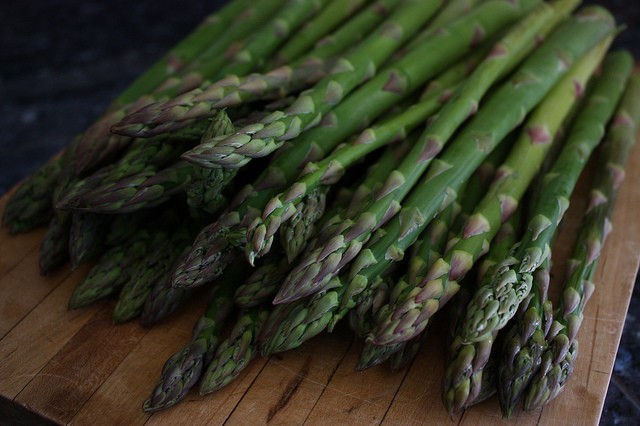
Southern Californians are blessed all year round with coastal asparagus, but the peak of the season is just about now, when vendors all over have a wide range of sizes. The stalks range in size from tiny, straw-sized specimens to huge stalks the width of a man's thumb. There's a persistent urban myth that the first stalks of the season are thin, then get fatter as the heat rises; this is not true at all. Stalks that grow closer to the root of the fern tend to be fatter; stalks on the outside tend to be thinner.
Southern Californians are blessed all year round with coastal asparagus, but the peak of the season is just about now, when vendors all over have a wide range of sizes. The stalks range in size from tiny, straw-sized specimens to huge stalks the width of a man's thumb. There's a persistent urban myth that the first stalks of the season are thin, then get fatter as the heat rises; this is not true at all. Stalks that grow closer to the root of the fern tend to be fatter; stalks on the outside tend to be thinner.
]
Europeans, incidentally, prefer white asparagus, which has been grown under covers to prevent chlorophyll from forming. White asparagus has a much milder taste than its standard green counterpart, and due to the meddling required to produce it, tends to be much more expensive.
Whichever kind of asparagus you choose, it ought to be fresh. Turn the bunch upside down and look for fresh cuts. (Some vendors stand their asparagus in moist paper or in a quarter-inch of water; this is fine and not a “trick”.) Look at the heads of the spears; they should be tight and not starting to spread out at all.
As asparagus matures, it gets tough and woody from the outside in. The standard advice is to bend a stalk of asparagus, which will break at the point where the tender stalk starts to turn woody. This is true, but wasteful; five seconds per stalk with a vegetable peeler will trim the woody parts and result in more asparagus. Fatter asparagus may need slightly more peeling than thinner asparagus.
Don't boil asparagus. Either steam it or roast it in order to preserve its flavor and nutrients. While high-fat sauces such as béarnaise or hollandaise are traditional accompaniments, fresh asparagus doesn't need anything but a half a teaspoon or so of olive oil, a sprinkling of salt, and a squeeze of lemon.
Follow Stick a Fork in it on Twitter @ocweeklyfood or on Facebook.

